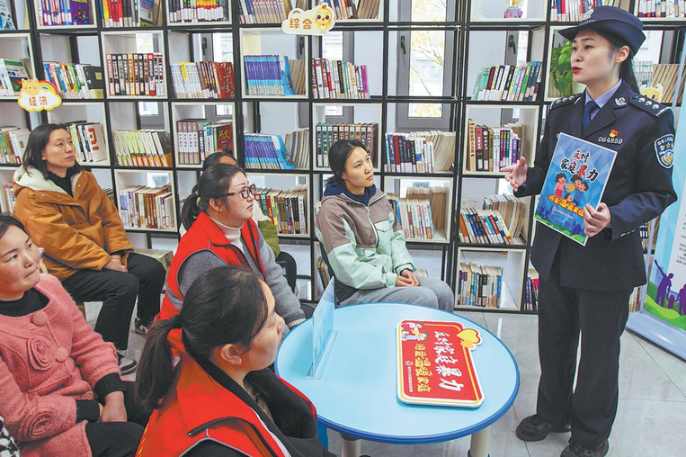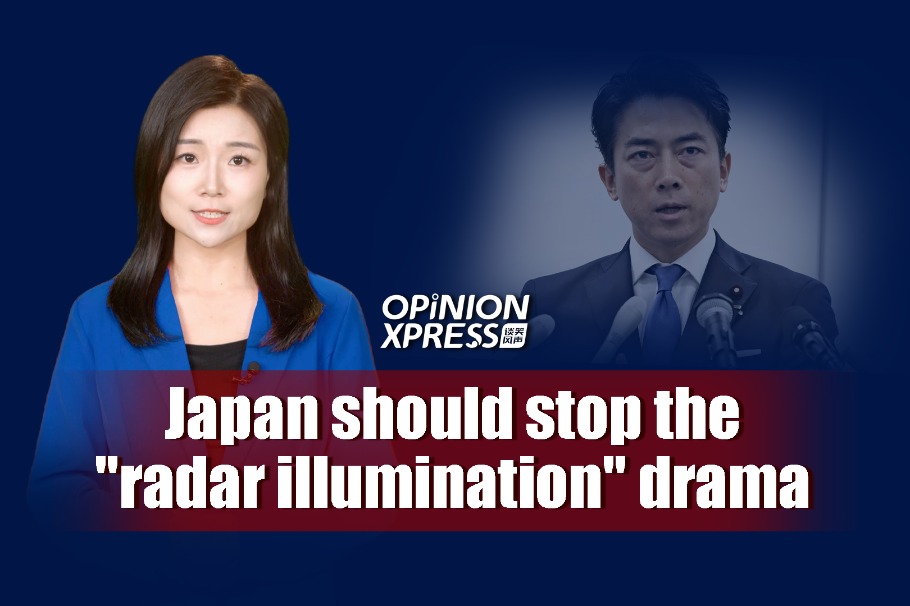Artist draws heartfelt lessons from the world
By Rena Li in Toronto | China Daily Global | Updated: 2020-01-21 09:17

In a world facing increasing conflict and instability, a Chinese Canadian is sending messages of love and peace through his artwork.
William Ho, 60, who arrived in Canada from Hong Kong 42 years ago, teaches Chinese brush painting at his art gallery in Unionville, Markham, a suburb of Toronto.
He is known as a goodwill ambassador of love and hope, and founder of One Heart Beat, a global initiative to help needy people and vulnerable children through art, culture and relief work.
The United Nations invited Ho to exhibit his art and his masterpiece, also called One Heart Beat, at its headquarters in New York in 2006, and he then became a global partner of the UN.
"This one heartbeat that all humanity shares has been demonstrated by a single stroke in Chinese ink, symbolizing the simple truth that we, as one global family, are all interconnected by the common heartbeat," he illustrates.
His one-stroke painting One Heart Beat is currently on display at the UN headquarters, the Canadian National Museum of Civilization, Beijing University and cities across the world.
Ho has been doing Chinese art and Chinese brush painting for more than 50 years and teaching for more than 30. He has over 3,000 students from around the world.
"I actually started with Western art when I was younger, working on pencil drawing, oil painting and water color. However, after I encountered Chinese brush painting a couple of years later, my eyes and mind were enlightened," Ho recalls.
Chinese brush painting has utilized almost all the colors going back at least 2,000 years. In many instances, Ho says that it is Western painting and artists learning through or being influenced by Chinese painting. Monet and his Water Lilies series is one good example, Ho says.
Chinese and Western artists should respect, appreciate and learn from each other, Ho says. "Self respect and mutual respect are the keys for real cultural exchange and global harmony."
Ho's artworks embody his philosophy that every life is non-replaceable and precious; people of different races, religious affiliations and beliefs should all be respected, as global harmony is rooted in global and local mutual respect.
That is a reason he emphasizes that "lives can be the most beautiful masterpieces of art, and art can be living".
Ho says one of his passions and missions is to bring Chinese culture "back" to the center stage of the world, as it had been for thousands of years.
"Being of Chinese descent, on one hand, we're very proud of our 5,000 years of history and civilization. On the other hand, we have a painful history marked by weaknesses and humiliation more than a century ago," Ho says.
A principle of ancient Chinese wisdom has been: "Don't overstate ourselves; don't understate ourselves".
"Non-Chinese people, particularly Western people, often misunderstand other cultures, particularly Chinese culture," Ho says. "They prefer to self-believe and they think they understand when, in fact, they have half-knowledge or half-understanding."
One of the themes in Ho's speeches delivered at the UN headquarters, the Canadian parliament and Beijing University was "position well China, and position well the world".
Ho says that some countries demand special treatment from the world or the international court in the name of democracy and freedom.
"This mentality is sick, selfish and bad. The people of the world and Mother Nature are saying no to the greedy. In fact, the whole world cannot afford these types of demands. We as a global family wouldn't allow this to happen.
"The double standard behavior may violate basic human rights, human standards, equality, democracy and freedom. The truth is everyone in this world is born equal and should be treated equally, fairly and with mutual respect," Ho says.
Contrary to greed, Chinese culture believes that "less is more".
"We create paintings not only through the expression of the look or form of the subjects, but more importantly, through the void, emptiness and nothingness-spaces of imagination," he says.
From his perspective, there are three pillars of Chinese culture: Confucianism, Taoism and Buddhism, with Confucian thinking predominant. But in Chinese brush painting, Taoism has more influence.
"We respect, treasure and learn from nature as our teacher. Nature, in general, includes human lives, landscape, animals and plants, (which) have been our traditional subject matter in art and painting," he observes.
Ho believes that a true Chinese outlook consists of wisdom, principles, freedom, romance and creativity.
























